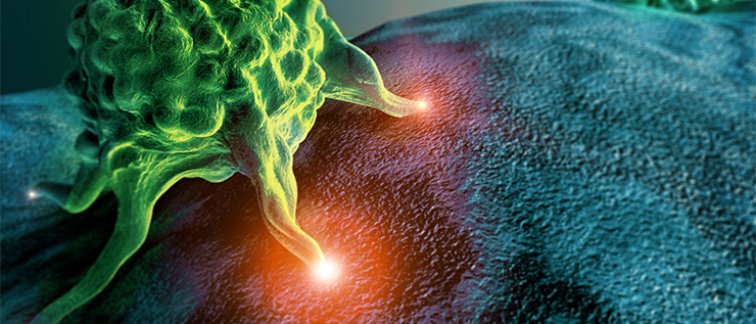Multiple myeloma (MM), often called Kahler's disease, is marked by the rampant growth of malignant B cells within the bone marrow. Although combination treatments have significantly improved the outcome of MM, nearly all patients eventually relapse and become resistant to existing therapies.
The Bone Marrow Environment: A Protective Shelter
Central to the survival and proliferation of MM cells is their bond with bone marrow stromal cells (BMSCs). BMSCs provide a nurturing environment for MM cells through the secretion of cytokines and growth factors. Importantly, they also bind to MM cells through direct cell-cell contact. As such, the bone marrow environment provides a protective shelter that makes MM cells harder to target and treat.
The interaction of BMSCs with MMs is coordinated by a chemical messenger known as CXCL12, especially with its splice variant, CXCL12γ. Previous work by Dr. Spaargaren’s team found that CXCL12γ expressed by BMSCs and retained on their cell surface latches onto a receptor ‘antenna’ on the surface of myeloma cells, CXCR4, promoting the adhesion of MM cells to the bone marrow stromal cells.
Kicking Out Myeloma
Dr. Spaargaren and his team hypothesized that severing the link between myeloma cells and bone marrow stromal cells by disrupting their molecular interaction may be the key to a new therapeutic approach.
“Our theory is that ‘detaching’ or even expelling the myeloma cells from their protective environment could be an extremely effective treatment, either on its own, or by making the cancerous cells more sensitive to other forms of therapy,” says Dr. Spaargaren.
Using cutting-edge techniques like CRISPR screening and unique experimental animal models, Dr. Spaargaren's team aims to:
- Understand the exact mechanism by which the molecular CXCL12γ-CXCR4 axis functions, with a focus on how it facilitates cellular adhesion.
- Determine its role in the progression of MM and its resistance to therapies.
- Evaluate potential strategies to target this axis in hopes of developing better MM treatments.
“We also aim to identify novel proteins that play a role in the localization, growth, and therapy resistance of human myeloma cells in the bone marrow microenvironment. We will then investigate the potential of these newly discovered proteins as drug targets by testing or developing pharmacological inhibitors for new (combination) treatments. Through this fundamental research, we aim to find therapeutic leads that will improve the prognosis of patients not only with multiple myeloma, but possibly also for patients with lymphoma or leukemia,” says Dr. Spaargaren.
For more information contact Dr. Marcel Spaargaren.
Funding by the Dutch Cancer Society.

Text by Laura Roy.
This article was created for Cancer Center Amsterdam.
© 2023 New Haven Biosciences Consulting– All rights reserved.

